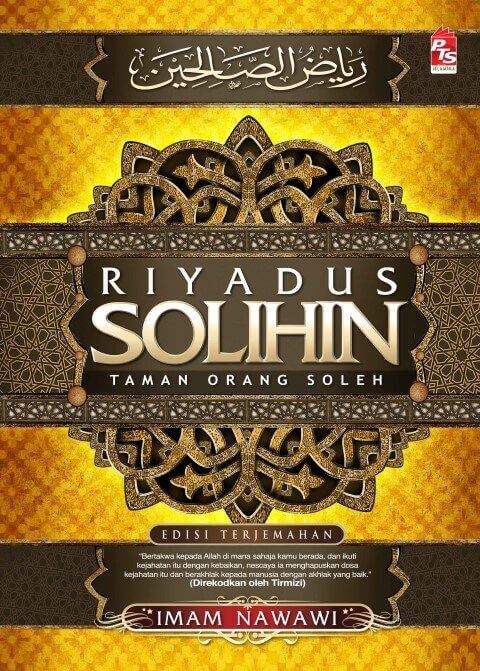PEARL of the Orient, Penang needs no further introduction. Ranked as one of Asia's most famous islands, Penang is a fusion between old and new; local and Western; oriental and colonial. The turtle-shaped island is a bustling port, a heritage city and an industrial area. The modern Penang embraces modernity while still holding close her traditions and old-world charm. Come to this obviously charming island of natural beauty, exotic heritage, culture and delightful cuisine.
Explore the heritage trails
Considering her colourful history, evident from the many structures and pre-war buildings still standing strong, the best way to discover Penang is to go on the heritage trail. There are several well-developed trails in and around George Town, with many heritage buildings. Discover the trails either on foot, on a tricycle or a four-wheeler. Some of the must-cover spots are:
Fort Cornwallis
The fort marks the point for Sir Francis Light's historic landing decades ago (i.e,1786). One of the first European structures on the island, Fort Cornwallis is today a privately managed cultural venue. It is fitted with a new ornamental wooden gate and is complete with an observation tower at the main entrance, a history gallery, cannons, and a handicraft and souvenir shop. There is also an open-air amphitheatre, where local music and dance festivals are frequently staged.
Penang Museum
The museum houses a rich historical and cultural heritage, showcasing Penang's communities through hundreds of old prints, paintings, costumes and historic artifacts. You will be taken on a journey down memory lane and a walk through the important periods in Penang's development.
Kapitan Keling Mosque
Another jewel in George Town's Islamic heritage is Kapitan Keling Mosque in Jalan Kapitan Kling (formerly Pitt Street). Originally, its entrance was in Lebuh Chulia. It dates back more than 200 years and was built by Cauder Mydin Merican who hailed from Tanjore district in Tamil Naidu.
Francis Light appointed him Kapitan Kling or head of the Indian community. A piece of land was granted for the building of the mosque.
Mydin had three wives. The first was Pattani Amah Othman Nachiar, who is regarded as a saint or keramat; the second was a member of the Kedah royal family, and the third was a Malay woman.
Kapitan Kling Mosque features a minaret at each corner and has been renovated twice. There is also an Islamic information centre in a tower block inside its compound.
Another jewel in George Town's Islamic heritage is Kapitan Keling Mosque in Jalan Kapitan Kling (formerly Pitt Street). Originally, its entrance was in Lebuh Chulia. It dates back more than 200 years and was built by Cauder Mydin Merican who hailed from Tanjore district in Tamil Naidu.
Francis Light appointed him Kapitan Kling or head of the Indian community. A piece of land was granted for the building of the mosque.
Mydin had three wives. The first was Pattani Amah Othman Nachiar, who is regarded as a saint or keramat; the second was a member of the Kedah royal family, and the third was a Malay woman.
Kapitan Kling Mosque features a minaret at each corner and has been renovated twice. There is also an Islamic information centre in a tower block inside its compound.
This monumental mosque crowned by yellow domes is the largest historical mosque in town. The dome-shaped elegant minaret reflects Moorish Islamic influence. The mosque reflects the colourful history and Penang's multiracial society.
Acheen Street Malay Mosque
Built in 1808 in Acheen Street, this mosque reflects architectural elements of the various communities of Penang - Acehnese, Anglo-Indian and Chinese.
It was founded by Tengku Syed Hussain, a wealthy trader from Aceh in Sumatra who arrived in 1792. He set up a bustling community on what is now Acheen Street, comprising bookshops, pilgrims' agencies and trading houses.
Before the Pilgrim's Board was set up, Acheen Street was the place where Muslims boarded ships heading for Jeddah so that they could perform the pilgrimage to Mecca. There is a hole half-way up the mosque's octahedral minaret which was caused by a cannon ball fired from the nearby Khoo Kongsi when riots broke out in 1867.
Built in 1808 in Acheen Street, this mosque reflects architectural elements of the various communities of Penang - Acehnese, Anglo-Indian and Chinese.
It was founded by Tengku Syed Hussain, a wealthy trader from Aceh in Sumatra who arrived in 1792. He set up a bustling community on what is now Acheen Street, comprising bookshops, pilgrims' agencies and trading houses.
Before the Pilgrim's Board was set up, Acheen Street was the place where Muslims boarded ships heading for Jeddah so that they could perform the pilgrimage to Mecca. There is a hole half-way up the mosque's octahedral minaret which was caused by a cannon ball fired from the nearby Khoo Kongsi when riots broke out in 1867.
The Acheen Street mosque is the oldest existing mosque in Penang. Its architecture incorporates and reflects the various communities of Penang - Acehnese, Anglo-Indian and Chinese. It is significant in more than one way to the history of Penang. The Acheen Mosque restoration clinched the Restoration and Preservation Award from the Ministry of Higher Education, Saudi Arabia, in 1999. The award was conferred for the first time in conjunction with the centennial celebration of the Kingdom of Saudi Arabia
Cheong Fatt Tze Mansion
Also known as the Blue Mansion, it is a rare survivor of the old Penang. It sports a Chinese-courtyard style with Western artnouveau features. It reflects the complex personality of its builder, Cheong Fatt Tze. The stately mansion comprises beautiful bedrooms, ceremonial halls, courtyards and gardens. Across the road are five blue shophouses, which were formerly the servants' quarters, attached to the mansion. They are now food and beverage outlets.
St George's Church
This is the oldest landmark Anglican church in the city and was named after the patron saint of England. In front of the church is a handsome memorial to Francis Light, who died on Oct 21, 1794. The church maintains much of its original setting.
Little India
Little India breathes a rich living history that spans centuries. Rows of pre-war shophouses abound with everything Indian - from pottery and stainless steel cutlery to spices and sundry, from jewellery to flower garlands. There are barbers and astrologers, millers and grocers, moneychangers and fruit sellers, South Indian restaurants and herb dealers. One of the most impressive landmarks is the 167-year-old Sri Mahamariamman Temple, tucked away in a quiet corner of Little India. The temple's ornate sculptures portray Hindu gods and mythology, and its peculiar seclusion gives it an instant, poignant air of solace.
P. Ramlee's House
Like its counterpart in Kuala Lumpur, the house is the best place to get acquainted with the legendary actor. The actor was born in the house, while the KL house was the last before he passed away. The house displays his personal memorabilia and items belonging to his family, telling his life story as a singer, actor, composer, comedian and film director.
Feel the pulse of a colourful island
While no one can resist her old world charm, Penang does have other attractions that are equally interesting and fascinating. Some of these were built fairly recently but have the magnetism as crowd-pullers.
Kek Lok Si Temple
The temple is often described as "the jewel in the crown of heritage temples". It is said to be one of the biggest Buddhist temple complexes in Malaysia. Its architecture boasts a blend of Chinese, Burmese and Thai influences. Its compound is surrounded by beautiful gardens and sacred ponds, prayer halls, souvenir shops and vegetarian restaurant.
Wat Chaiya Mangkalaram
The largest Buddhist temple in Penang, the Wat Chaiya's architecture is unique with Thai, Burmese and Chinese influences. Within the main temple is the reputed third-longest reclining Buddha in the world, measuring 33 metres. The Buddha rests its head, pointing northwards, on his right palm. This position signifies the enlightenment or Nirvana.
Penang Hill
Penang Hill or Bukit Bendera is Malaysia's first hill station and resort. Standing 800 metres above sea level, the hilltop boasts temperate weather and offers a fantastic aerial view. The most interesting part of the trip here is the ride on the funicular train, which was first opened for use in 1923. The train operates in two sections and passengers change railcars at midpoint. Still some vouch that the best way to appreciate the sights is to get on your feet and hike up. You just need an extra sense of adventure and enough stamina.
War Museum
This is a museum unlike any other. It was originally a fortress built in the 1930s by British Royal Engineers to protect British vessels in Penang Harbour. It was turned into a POW camp during the Occupation but restored and turned into a museum in 2002. Over 60 relics have been restored to their original state. Brave yourself to crawl through tunnels in pillboxes or step into the torture chamber to actually imagine the pain the prisoners went through.
Toy Museum
It's a world of fantasy and creativity. The Toy Museum houses some 100,000 toys, dolls, models and other collectibles, which will amuse not only the children but adults, too. The museum is Asia's first and the world's largest toy museum. It made its way into the Malaysia Book of Records in 2003 for having the Largest Toys and Figurines Collection.
Back in tropical bliss
Clustered with heritage buildings, industrial zones and commercial areas, the small island of Penang still has something naturally wild to stir your excitement. Though most of her parks are man-made, they have been around for decades, playing hosts to millions of tourists. And, interestingly, most of these parks are located on the other side of the island. Go to Teluk Bahang and visit them all in one go!
Tropical Spice Garden
One of Penang's unique attractions, the garden has three undulating trails leading to 11 gardens. Choose one to suit your fitness but don't miss out on any of these gardens - Water Garden, Cycad Room, Banana/Heliconia Bank, Spice Terraces, Bamboo Garden, Ginger Walk, Sugar Terrace, Ornamental Valley, Croton Wall, Fern Walk and Jungle Trail. The Tropical Spice Garden also houses a pre-war Straits Colonial country bungalow, a Spice Museum, Garden Shop for budding botanists, Spice Cafe and a gift shop.
Tropical Fruit Farm
Come for a fruity experience at Tropical Fruit Farm. The 25-acre orchard has over 250 different species of fruit trees from the region and around the world. You can go for an hourlong guided tour to explore the orchard and end it with fresh fruit juices and cuts.
Penang Butterfly Farm
Fancy playing in the same locale where some 4,000 Malaysian butterflies flutter about? Or where many species of frogs, scorpions and other insects claim as home? A Fear Factor feat it is not, but Penang Butterfly Farm is the place for those who love beautiful sights of butterflies and insects in a beautifullylandscaped garden.
Penang Bird Park
Another park not to be missed is the sprawling five-acre Penang Bird Park. It is home to more than 3,000 birds from more than 300 local and international species. Walk through its two aviaries and 132 cages to get a closer look at Tropical Spice Garden Pre-war buildings some of the birds.
Penang National Park or Pantai Aceh Forest Reserve
This is a natural attraction. The forest reserve is home to the country's only meromictic lake where you can find a layer of cooler fresh water on top and a layer of warmer seawater below. This is a seasonal phenomenon where fresh water from a nearby stream combines with the seawater that rushes in through the single opening during high tide. Located at the north-west tip of the island, the forest reserve is primarily a coastal hill dipterocarp forest, coastal mangrove forest, beaches and rocky shores. It is also home to about 150 species of birds.
Ferringhi and Teluk Bahang beaches
Both form Penang's top tourist belt with stretches of exotic beaches, happening entertainment outlets and the nightly Feringghi Night Market. So, while here, fill your leisure hours at the beach. Just choose one: Feringghi Beach, Muka Head, Teluk Ketapang, Pantai Kerachut, Pantai Mas or Monkey Beach. If you want something different, head to Teluk Bahang Forest Park and visit Penang Forestry Museum.
Go shopping and binge on the best food
What can you get in Penang? Anything, really... antiques and curios, art nouveau and baroque, silver and china, glass and bric-a-brac, you name it. Better still, all these are sold at bargainable prices. Haggle for the best price, shop around for better deals - that's what shopping is all about in Penang. Go to Chulia Street, Penang Road and Burmah Road. Campbell Street is a pedestrian mall with a hive of activities and the place to head for the best bargains. For something unusual, head to Lorong Kulit - the flea market famed for its curious and antiques. But if you like to shop in comfortable airconditioned complexes, Penang is also a modern shopping haven. Go around George Town and you are bound to come across big shopping malls.
Who can dispute that Penang is a food paradise? Whether it's fine dining or hawker fare, Penang serves a heady concoction of delicious cuisine. Penang is very much synonymous with hawker food and coffee shop dining. This definitely means dining out is a must. It can be done anywhere - at roadside stalls or humble coffee shops. Look for Penang specialties like nasi kandar, pasembor, laksa Penang, char koay teow, chicken rice, prawn noodles and many more. Just choose one eatery near you and indulge the Penang way.
There is also a rich history of Islamic influence on the island. Some 700 years earlier, as far back as the 12th century, Arab traders traded with Penang. They were soon followed by missionaries from the Middle East, India and Java.
Today, who would have guessed that Lebuh Chulia, a backpackers' haven, and its surrounding areas have the richest collection of urban Muslim heritage buildings in George Town. Let's take a stroll there and find out more about this rich heritage of Penang.
There is also a rich history of Islamic influence on the island. Some 700 years earlier, as far back as the 12th century, Arab traders traded with Penang. They were soon followed by missionaries from the Middle East, India and Java.
Today, who would have guessed that Lebuh Chulia, a backpackers' haven, and its surrounding areas have the richest collection of urban Muslim heritage buildings in George Town. Let's take a stroll there and find out more about this rich heritage of Penang.
Penang Islamic Museum
Entering the Penang Islamic Museum in Acheen Street is like stepping into a bygone era.
The mansion, owned by Syed Mohammed Alatas, a spice trader, was built in the 1860s. He had two wives. The first was a member of a Malay royal family, while the second was the daughter of Khoo Tiang Poh, a Straits Chinese.
About 10 years later, the Acehnese battle against the Dutch broke out and Syed Alatas supported the Acehnese by supplying them with firearms. The mansion then was also used as an operation base or a secret meeting place by the Acehnese leaders.
The ground floor of the museum has various sections: Introduction to the History of Penang, Islam and Culture, Outstanding Muslim Personalities, Architecture and Interior Decoration, and Religious Teachings.
The upper floor shows the growth and development of Islam in Penang through trade.
Among the interesting exhibits at the museum are dioramas depicting the early days, an ancient grinding stone (batu giling), a replica of the Terengganu Stone, Arab calligraphy, paintings, old photographs of Muslim personalities and the bed of Syed Mohammed Alatas.
Former Residence of Ku Din Ku Meh
Located at 20, Jalan Penang, this mansion is the former residence of one of Kedah's famous sons, Ku Din Ku Meh, who was Governor and Raja of Satun in Siam during the early 20th century. Born in Anak Bukit in Kedah in 1848, Ku Din Ku Meh was a prodigy - starting his career as head of Kedah Prisons at the age of 14.
He was a highly learned man who was fluent in Thai and Malay, and had transcribed a book of laws in 1894. Three years later, Sultan Halim Hamid Shah appointed him as High Commissioner of Setul (now Satun).
In 1902, Ku Din Ku Meh was installed as the "Raja of Setul" and used the name Tengku Baharuddin bin Tengku Meh. Under his administration, Setul prospered and traded with Rangoon and Penang. He held the position for 14 years before he retired.
His diary and administrative records are now kept at the Thai National Archives in Bangkok. Ku Din married a woman from Penang. She lived in a beautiful mansion in Penang Road. Today, this mansion has been converted into a hotel, and visitors are welcome to view its interior.
Benggali Mosque
The early Indians to set foot on Penang were the Benggalis from Bengal who came as sepoys, convicts and labourers with the East India Company. Francis Light himself made trips to India to bring back farmers from Calcutta to develop agriculture on Betel Nut Island. The British termed all northern Indians who sailed to Penang as Benggalis.
When the so-called Benggali population grew, the East India Company granted a piece of land in now Lebuh Leith to build a mosque to serve their spiritual needs.
In the early days, the sermons was conducted in Urdu. However, over time, as Tamil worshippers outnumbered the Benggalis, the language used changed to Tamil and Malay.
Nagore Shrine
This gem of Islamic heritage located in Lebuh Chulia is dedicated to Caliph Syed Shagul Hamid, who was hailed as the Muslim Saint of Nagore in south India.
Born in Manickapur in India in the 14th century, he was the 23rd descendant of Prophet Muhammad. During his travels through Baluchistan and Afghanistan to spread the teachings of the Prophet, he was said to have performed miracles like giving sight to the blind and curing lepers.
When he died at the age of 68, he was honoured as a saint. The alcoves of Nagore Shrine are now taken up by petty traders.
Entering the Penang Islamic Museum in Acheen Street is like stepping into a bygone era.
The mansion, owned by Syed Mohammed Alatas, a spice trader, was built in the 1860s. He had two wives. The first was a member of a Malay royal family, while the second was the daughter of Khoo Tiang Poh, a Straits Chinese.
About 10 years later, the Acehnese battle against the Dutch broke out and Syed Alatas supported the Acehnese by supplying them with firearms. The mansion then was also used as an operation base or a secret meeting place by the Acehnese leaders.
The ground floor of the museum has various sections: Introduction to the History of Penang, Islam and Culture, Outstanding Muslim Personalities, Architecture and Interior Decoration, and Religious Teachings.
The upper floor shows the growth and development of Islam in Penang through trade.
Among the interesting exhibits at the museum are dioramas depicting the early days, an ancient grinding stone (batu giling), a replica of the Terengganu Stone, Arab calligraphy, paintings, old photographs of Muslim personalities and the bed of Syed Mohammed Alatas.
Former Residence of Ku Din Ku Meh
Located at 20, Jalan Penang, this mansion is the former residence of one of Kedah's famous sons, Ku Din Ku Meh, who was Governor and Raja of Satun in Siam during the early 20th century. Born in Anak Bukit in Kedah in 1848, Ku Din Ku Meh was a prodigy - starting his career as head of Kedah Prisons at the age of 14.
He was a highly learned man who was fluent in Thai and Malay, and had transcribed a book of laws in 1894. Three years later, Sultan Halim Hamid Shah appointed him as High Commissioner of Setul (now Satun).
In 1902, Ku Din Ku Meh was installed as the "Raja of Setul" and used the name Tengku Baharuddin bin Tengku Meh. Under his administration, Setul prospered and traded with Rangoon and Penang. He held the position for 14 years before he retired.
His diary and administrative records are now kept at the Thai National Archives in Bangkok. Ku Din married a woman from Penang. She lived in a beautiful mansion in Penang Road. Today, this mansion has been converted into a hotel, and visitors are welcome to view its interior.
Benggali Mosque
The early Indians to set foot on Penang were the Benggalis from Bengal who came as sepoys, convicts and labourers with the East India Company. Francis Light himself made trips to India to bring back farmers from Calcutta to develop agriculture on Betel Nut Island. The British termed all northern Indians who sailed to Penang as Benggalis.
When the so-called Benggali population grew, the East India Company granted a piece of land in now Lebuh Leith to build a mosque to serve their spiritual needs.
In the early days, the sermons was conducted in Urdu. However, over time, as Tamil worshippers outnumbered the Benggalis, the language used changed to Tamil and Malay.
Nagore Shrine
This gem of Islamic heritage located in Lebuh Chulia is dedicated to Caliph Syed Shagul Hamid, who was hailed as the Muslim Saint of Nagore in south India.
Born in Manickapur in India in the 14th century, he was the 23rd descendant of Prophet Muhammad. During his travels through Baluchistan and Afghanistan to spread the teachings of the Prophet, he was said to have performed miracles like giving sight to the blind and curing lepers.
When he died at the age of 68, he was honoured as a saint. The alcoves of Nagore Shrine are now taken up by petty traders.
www.tourismpenang.gov.my


















No comments :
Post a Comment